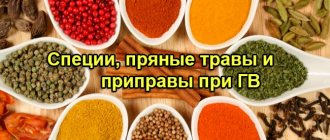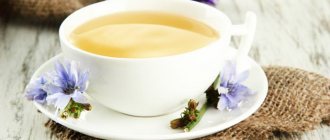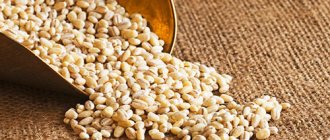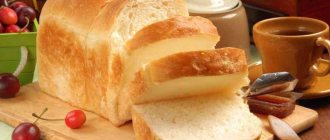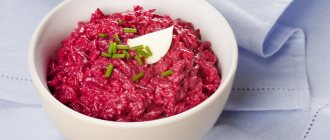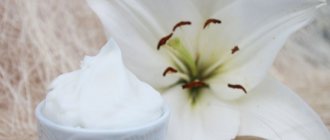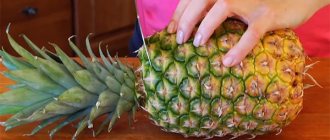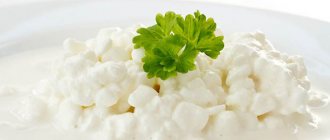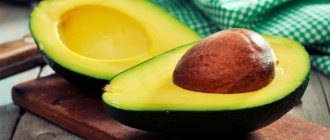Is it possible to eat bran while breastfeeding?
In the first month, the diet of a new mother is quite meager. However, this does not mean that the menu must be poor and monotonous. On the contrary, the more often you supplement it with new dishes and products, the sooner you will recover after childbirth and the better quality your breast milk will be.
Bran is the rough outer part of cereals and plant crops, which retains all the beneficial properties and vitamins.
Such food is rightfully considered one of the most favorable for the functioning of the gastrointestinal tract and is hypoallergenic. Therefore, if the doctor did not give you strict recommendations and did not order you to follow a special strict diet excluding cereals and grains, bran can and even should be eaten while breastfeeding.
To make sure that your body is ready for such roughage, first try a few teaspoons of uncooked bran. To do this, you can simply mix the product with kefir and consume it after breakfast.
- Basically, all doctors’ concerns come down to the reaction of the mother’s body, and not her infant baby - food rich in fiber can sometimes cause excessive gas formation in the intestines, since it is practically not digested and is excreted from the body almost in its original form.
- You should add bran to your menu with caution if you generally do not tolerate cereals well. Sometimes a person has this feature, and then doctors recommend adhering to a gluten-free diet. Poor tolerance to bran may be associated with a so-called allergy to cereals.
- It is also worth holding off on bran for mothers who have had a caesarean section. The fact is that in the process of digesting cereals, a slight bloating of the intestines may occur, and, as a result, the pressure on the fresh, not yet healed uterine suture will increase, causing discomfort.
But in all other cases, bran will not only be a useful product for a nursing mother, but will also help you feel more alert and healthy. A bran-based breakfast also allows you to lose weight faster after childbirth, because slowly digested food gives you a long-lasting feeling of fullness and relieves hunger pangs.
If you have already tried bran and introduced this ingredient into your menu after giving birth, and neither your body nor the baby’s stomach reacted negatively to it, then you can safely make such food a daily dish. For example, you can eat bran for breakfast or in the evening along with fermented milk products to improve digestion.
Nutrition after caesarean section
Nutrition after a cesarean section is not much different from the diet of ordinary women in labor, but there are still differences. Therefore, it is better to immediately find out what you can eat after giving birth through a cesarean section.
On the first day after surgery, the young mother is only allowed to drink. Moreover, either ordinary water without gases, or water flavored with a few drops of lemon juice.
The next day, the woman can eat, but the food should be liquid and neutral, that is, as safe as possible and gentle on the digestive system. This could be chicken broth, tea, lean meat.
Then, as you recover from the operation, the diet becomes the most common and completely repeats the menu of women who gave birth naturally.
What are the benefits of bran during breastfeeding?
First of all, cereals, from the shell of which bran is made, are rich in B vitamins. These are one of the most vital substances for women's beauty and health. Such elements are especially valuable in plant crops, since they are better perceived by the body and absorbed faster.
Restoration of the gastrointestinal tract, replenishment of the body with vitamins
If you regularly eat bran, you can improve not only the condition of the digestive system, but also strengthen your hair, nails and make your skin healthier and more elastic. As you know, B vitamins take an active part in the formation of new body cells, including our skin cells.
B vitamins will also help you recover faster after childbirth. These beneficial substances accelerate metabolism and improve tissue regeneration, as a result of which the sutures after an episiotomy or cesarean section scar and heal much better. Bran is also useful for those young nursing mothers whose hair falls out after childbirth, nails break, or skin peels.
Since during breastfeeding most of the minerals and trace elements leave the mother's body along with her milk, bran can be an excellent source of the entire spectrum of vitamin B. This will allow you to maintain the firmness and elasticity of your skin, as well as avoid the appearance of stretch marks and deterioration of hair and nails .
Getting rid of constipation
Bran is the most necessary product in the diet for all nursing women who suffer from incessant constipation. It is known that after childbirth such a problem is far from uncommon. This is due, first of all, to the fact that most of the liquid is processed into breast milk.
When digested in the intestines, bran produces a large number of beneficial bacteria - this product is difficult for our body to digest, and therefore a lot of strength and energy is spent on it. As a result, under the influence of an increase in intestinal microflora, the stool becomes thinner and constipation is cured.
How to use bran for constipation
And to definitely get rid of this piquant problem, use the following scheme:
- At night, pour 3 tablespoons of bran with slightly warm water and leave until the morning.
- Swollen bran should be eaten for breakfast, on an empty stomach. To do this, simply mix them with a glass of kefir.
This recipe will not only regulate bowel movements and cure constipation, but will also help you lose weight. Bran takes a very long time to break down in the intestines and blocks the feeling of hunger. And you can use this recipe to prevent constipation even in the first month of breastfeeding.
Treating postpartum depression
Postpartum depression is another unpleasant condition that can plague a new mother.
Scientists have proven that eating foods rich in B vitamins reduces the risk of this disease, since these substances are also responsible for the health of the nervous system.
Thus, bran is an affordable and incredibly useful product for the health and beauty of a nursing mother, the use of which will benefit not only the digestive system, but also the entire female appearance in general.
How often and with what can you eat bran during breastfeeding?
This most valuable product for health works best when it is eaten regularly. A nursing mother should use bran daily, especially if you suspect a deficiency of B vitamins or have difficulties with bowel movements and natural bowel cleansing.
If this dish seems overly bland and tasteless, it can be combined with other ingredients. For example, dairy products, fruits and juices from them. Bran can also become a useful component for other foods - for example, they can be added to morning oatmeal, homemade cookies, and even cutlets.
Below we provide a simple table that will tell you what a nursing mother can eat bran with in different months after giving birth. Typically, such recommendations are relevant in the first six months of a baby’s life, when his body is overly receptive and sensitive to heavy or new foods in the mother’s diet.
| 1 month | With fermented milk products: kefir, cottage cheese. You can also steam the bran with water. You can combine them with permitted fruits - baked apples and bananas. |
| 2 month | With soups based on low-fat meat broth, with various types of cereals. You can also add bran to fruit juices (preferably those made for children). |
| 3 month | With milk. Whole cow product is usually allowed this month, but it is better to boil the milk first. |
| 4 month | With dried apricots, prunes. This option is guaranteed to relieve constipation and saturate the body with useful substances. Before the 4th month, combining bran with dried fruits is not recommended, so as not to cause tummy problems in the baby. |
| 5 month | You can add bran to almost all permitted and low-fat foods and drinks. However, it is worth remembering that such a product does not like high temperatures and boiling. |
| 6 month | With yoghurt and fresh fruit, as well as homemade desserts and pastries. |
First month
The most serious test awaits a young mother in the first month after giving birth, because the restrictions - what can be eaten and what cannot - will be the most extensive. Along with this, her diet should be varied and balanced so that she can regain strength, normalize stool and establish lactation. In the first month after the birth of the baby, a young woman can safely eat foods such as:
- still mineral water;
- rosehip decoction;
- lightly brewed black tea;
- kefir;
- hard cheeses;
- mashed potatoes;
- porridge with water, excluding rice;
- beet salad if the child has normal tolerance to this product;
- vegetable stew;
- low-fat soup;
- boiled fish fillet;
- steamed or boiled meat: lean pork (tenderloins), beef, poultry (white meat);
- green baked apples;
- ripe banana (but only 1 piece per day).
At the same time, the young mother needs to try to avoid colic and allergies in the baby. And for this purpose, nutritionists and pediatricians recommend that in the first month after childbirth, all nursing mothers refrain from consuming foods such as:
- fruit juices;
- chocolate;
- coffee;
- milk;
- baking;
- bakery;
- spices;
- very salty;
- too spicy;
- a lot of fried food;
- canned food;
- smoked;
- red and black caviar;
- raw vegetables;
- Exotic fruits;
- tomatoes, cabbage, cucumbers, radishes in any form;
- some berries (mostly red, which are considered the strongest allergens): cherries, strawberries, cherries;
- alcohol.
If you adhere to these lists in the first month after childbirth, there will be no problems with recuperation, adequate feeding of the baby and lactation. Accordingly, the easier the second adaptation period will be from the point of view of the young mother’s diet.
A woman can enjoy a baked pear in the second month after the birth of her baby.
Rye bran during breastfeeding
A wholesome and healthy diet is quite possible without harming your figure, which many mothers worry about so much during the postpartum period.
For this purpose, many breastfeeding women, concerned about their nutrition and the quality of breast milk, introduce rye bran into their daily diet while breastfeeding. In addition, such a product has proven itself as a preventive measure for various diseases and, in most cases, is well accepted by the newborn’s body.
List of prohibited products
There are a number of products that are strictly contraindicated for women after childbirth (and often the entire period of breastfeeding). These include:
- coffee and cocoa;
- alcohol;
- carbonated drinks and any drinks containing preservatives and colorings;
- onion and garlic;
- hot sauces (including ketchups) and spices;
- homemade pickles and marinades (pickles, sauerkraut, wild garlic, lecho, etc.);
- some fruits, namely grapes, strawberries, peaches, citrus fruits, pineapples and other allergens;
- nuts (with caution), legumes;
- mushrooms;
- honey;
- some sweets (including chocolate);
- fresh bakery;
- radish and cabbage;
- fatty, salty, smoked foods.
All these products can negatively affect the quality of breast milk and also cause allergies in the baby. In the first month, it is better to abstain from using them altogether, and then adjust the menu in accordance with the doctor’s recommendations.
Is it safe to eat rye bran during breastfeeding?
Bran is the outer shell of grains. Rye bran is made from rye grains. Previously, such a product was classified as waste and was not used for food. Later, the tasty and beneficial properties of rye bran were discovered.
The product is rich in vitamins B, E and PP, polyunsaturated omega acids, fiber, enzymes, iodine and other valuable substances.
The calorie content of rye bran is about 200 kcal / 100 g of product. At the same time, rye bran satisfies hunger well without adding extra pounds.
Bran can be eaten while breastfeeding. The exception is when a woman has diseases of the gastrointestinal tract, pancreas, or hemorrhoids.
The daily amount of rye bran eaten should be limited to 20–30 g. In larger quantities, they can provoke digestive disorders. This is especially true for babies, who may be affected by diarrhea, bloating, and newborn colic.
In addition, unlimited consumption of rye bran can lead to a lack of vitamins in the body of the mother and child and reduce the absorption of medications.
What beneficial properties does rye bran have for the nursing mother?
Due to its valuable composition, rye bran performs a number of useful functions for the human body:
- They are used in the prevention of constipation, both in women after childbirth and in infants who are prone to such phenomena.
- They have a positive effect on the nervous system.
- They help get rid of dysbiosis, which often affects newborns.
- Improves the functioning of the endocrine system.
- They are used in dietary nutrition to normalize metabolism and lose extra pounds.
- Promotes better absorption of vitamins and microelements by the body.
- They reduce cholesterol levels in the blood and remove harmful carcinogens from the body.
Rye bran is recommended for use by people suffering from diabetes. This product can even be found in special diabetic nutrition departments.
The inexpensive cost of rye bran makes it popular among young mothers.
Therapeutic effects of bran on the body of a nursing mother
In addition, the use of rye bran for preparing medicinal decoctions is quite common.
- It is believed that such decoctions help cope with respiratory diseases and help lower blood pressure. The effectiveness of this method has not been scientifically proven, but is recommended by many women.
- Constipation and other intestinal problems are also treated with rye bran. To do this, half an hour before meals, take 1 tablespoon of bran diluted in 1 glass of water.
- Their regular consumption promotes the proper functioning of the digestive system and helps cope with excess weight.
Recommendations for choosing rye bran for nursing mothers
When choosing rye bran, you should be guided by the following tips:
- It is preferable to purchase such bran in pharmacies.
- The composition of the product should not contain harmful additives or dyes. Any flavor enhancers can negatively affect the baby's health.
- The appearance of rye bran must correspond to the norm, without any areas of mold. These flakes have virtually no odor.
How to properly use bran during lactation
It is advisable to consume bran during lactation not in dry form, but by steaming it with boiling water. You can also use milk, kefir or yogurt. Rye bran goes well with dairy products, which should also contain exclusively safe ingredients for breastfeeding.
Bran crushed to a powder form can be used in the baking of bread, pancakes, cookies and others. This kind of flour can be added to soups, side dishes, vegetables, cutlets, and salads. Provided that approved ingredients are used, such dishes are acceptable for nursing women.
When consuming rye bran, it is necessary to regularly replenish the body's water balance so as not to cause constipation. The daily intake of liquid should be at least 2 liters.
During breastfeeding, rye bran can be consumed both in its pure form and used in the baking process. You can try this product starting from 2 months of a child’s life. Allergic reactions to such bran occur extremely rarely, however, the baby’s reaction to their use should be assessed.
Read general recommendations on the use of bran during breastfeeding.
Recommendations
Compliance with the golden rules of nutrition for a young nursing mother will allow you to avoid many troubles (starting with the baby’s gastric upset and ending with the complete loss of strength of the woman herself, her physical and moral exhaustion). This will allow you to track the baby’s reaction to the mother’s diet, which is changing and constantly enriched with new products.
- You can add no more than one product to the menu in 2 days.
- This should be done only in the first half of the day, so that before bedtime you can track the baby’s reaction to the administered product.
- Initial dosages of food should be minimal.
- If a child becomes covered in a rash, becomes restless, or develops severe gas, the newly introduced product should be excluded from the diet for some time until the baby’s stomach recovers and becomes completely stronger.
- There is no need to rely heavily on water in the first month after birth. The drinking regime during this period also requires restrictions: no more than 1 liter per day, otherwise lactation will increase disproportionately to the baby’s needs, and the matter may end in mastitis. If there is not enough milk, the amount of liquid you drink per day can be increased to 1.5–2 liters.
- You should not go on a diet immediately after giving birth. You need to wait 3-6 months, otherwise your baby risks remaining hungry, which will certainly affect his further development.
- A woman’s diet after the birth of a child should be natural, without nitrates, preservatives and artificial colors - in a word, healthy.
- All products that a woman consumes in the first two months after childbirth must be thoroughly thermally processed.
If a woman’s nutrition after childbirth was organized correctly, in accordance with the above lists of products - what she can eat during this period and what is not recommended - then the value of the food she consumes should be at least 2,500 kcal per day. After all, 800 of them will be spent on milk production. If the caloric content of food is reduced, lactation will decrease, the mother will not have enough energy to support the baby, and serious problems will begin. Therefore, the question of what a woman can eat after giving birth is very important and requires special attention.
Is it possible for a nursing mother to eat bran?
During breastfeeding, a woman tries to ensure that her diet is not only tasty and varied, but also as healthy and safe as possible for the baby. Bran is a product with unique properties that has won the approval of specialists and the love of people who care about their health. Their main advantage is the abundance of fiber, a deficiency of which is observed in the diet of almost any person. But will bran be useful for breastfeeding? Which type of product to choose and how to use it correctly for nursing mothers?
What can you eat during and immediately after childbirth?
During contractions, women often experience wild hunger, as the body expends enormous effort at this time. Therefore, expectant mothers are advised to take nutritious, high-calorie foods with them to the maternity hospital. It can be:
- muesli bars;
- nuts;
- dried fruits;
- natural chocolate;
- hematogen.
These foods can be consumed between contractions to give the body additional strength and energy. It is also worth taking a bottle of still mineral water to the birth room. It will replenish fluid loss in the body during labor and childbirth.
As for the postpartum period, it is better to consult a doctor about your diet. He will allow or not allow you to consume certain foods based on your specific case and condition.
If the birth was successful and without problems (there were no ruptures or complications), then, as a rule, the following are allowed:
- low-fat natural cheese;
- whole wheat bread;
- porridge;
- lean boiled meat.
Eating all spicy foods while breastfeeding is strictly prohibited!
Composition and types of product
When processed from grain into a finished product, cereal crops are peeled from their shells. These shells are the bran. Until recently, this product was considered unfit for consumption and was simply disposed of or used as an additive to animal feed.
But today the situation has changed radically, and bran has taken pride of place on the shelves of pharmacies and health food stores. This happened thanks to studying the composition of this unique product. Experts say that the shell contains up to 90% of the beneficial substances originally present in the grain. This fact undoubtedly speaks in favor of their nutritional value.
- Coarse fiber (more than 40% of the total mass).
- Vitamins of group B, A, E.
- A small amount of valuable vegetable fats.
- Healthy “slow” carbohydrates that do not increase blood glucose levels.
- Polyunsaturated fatty acids Omega 3 and Omega 6.
- Minerals: iodine, selenium, magnesium, chromium, potassium, etc.
The varieties of bran are determined by the variety of cereal crop. The most popular are rye, wheat and oat. They are the easiest to buy, since this product is available in any supermarket in the diabetic nutrition department. Less common are rice, buckwheat, barley, mustard and flax bran. They are mainly used only in professional cooking. But even those varieties of product that are available to the average buyer are more than enough to diversify the diet and enrich it with valuable nutrients.
Bran also differs in release form - crumbly and granular. Crumbly ones are convenient to use when adding to porridges, soups, main courses, and also to replace part of the flour with them when making healthy baked goods. The granulated product is available in the form of “balls” and “sticks” and is similar to children’s breakfast cereals; it is convenient to eat it just like that, replacing snacks or bread.
The benefits of bran during breastfeeding
For a nursing mother and baby, the grain shell can bring many benefits. Many women suffer from such a complication after childbirth as constipation. Often the situation is aggravated by the presence of stitches and the inability to push. In this situation, this product will be a real salvation. Due to its high content of dietary fiber, it stabilizes intestinal function, relieves constipation, removes toxins and restores microflora in the rectum.
Another big plus of bran is that it helps you lose excess weight. This effect is achieved by improving the functioning of the gastrointestinal tract and a long feeling of satiety when consuming the product. Due to the fact that the product is very filling and does not have too high a calorie content (about 180 kcal per 100 g), it allows a nursing mother to control the amount of food eaten and plan her diet taking into account the calorie deficit in order to lose weight.
We recommend reading: What can nursing mothers eat?
Other beneficial properties of bran:
- Helps reduce glucose and “bad” cholesterol in the blood.
- Cleanses the walls of the intestines and stomach from mucus, bile acids and nitrates.
- Have a beneficial effect on metabolic processes.
- Ensure good functioning of the thyroid gland, heart and liver.
- Get rid of dysbacteriosis.
- The high content of vitamins and minerals helps restore the body after pregnancy and childbirth, and also has a beneficial effect on the baby’s body, penetrating into breast milk.
Can a nursing mother eat bran? Of course, it is possible and even necessary. The main thing is not to abuse this product, like any other, and the benefits will be very noticeable.
All beneficial properties of grain shells apply to any variety. The choice of one variety or another may depend on the personal preferences of the mother or the assortment in the store
Can a nursing mother consume this product?
Bran is a product that contains a large amount of dietary fiber, which will be useful for both a nursing mother and her baby. So the answer is clear: nursing mothers can eat bran . As for the varieties: it is best to start getting acquainted with bran with varieties such as rice, buckwheat and flax.
It is better to leave wheat, barley, corn and oat varieties for later, when you are sure that your baby reacts calmly to this product.
Important! Oat bran should not be consumed by women who have individual gluten intolerance. If a nursing mother has stomach problems such as gastritis, enteritis, colitis or stomach ulcers, then only a limited amount of the product is allowed.
In order to find out this, you should consult with your gastroenterologist, since everything is individual for each disease and for each person.
From what month?
Bran usually does not cause allergic reactions, so doctors advise starting to introduce the product into your diet quite early - the mother can eat it when the baby is 2 months old . This is the optimal time for the child’s body to accept this product normally.
In what form should I eat it?
Bran is produced in the form of granules, loaves or powder. The granules can be poured with milk and you will get a kind of ready-made instant dish, similar to children's breakfast cereals. Powdered bran is added to porridges and first courses, replacing cereals with them.
You can also mix the product with flour and fry it, for example, pancakes or pancakes. Such bran is also added to baked goods. Bran in the form of loaves is used to replace regular bread , using them as the basis for a sandwich or snack.
Benefit
- Bran is a dietary product that can be used for weight loss, which is often important for women after childbirth.
- This product helps prevent cholelithiasis.
- Bran has a beneficial effect on cleansing the intestines. Attention! Bran facilitates the passage of food, promotes the renewal of the skin epithelium, which is a good prevention of cancer of the digestive system.
- Thanks to bran, metabolism and hormonal levels are restored, that is, they contribute to the restoration of the female body after childbirth.
- Another useful property is maintaining normal levels of glucose and cholesterol in the blood.
- Helps cleanse the intestines and stomach of mucus.
- Bran is the best natural remedy against dysbiosis.
- They have a beneficial effect on the heart, thyroid gland and liver, normalizing their function.
- Bran helps improve the absorption of vitamins and minerals.
- The product relieves constipation, flatulence and bloating.
- Bran is rich in B vitamins, which contribute to the normal functioning of the nervous system, which is extremely important for a woman who has experienced stress during childbirth.
Possible harm of bran for mother and baby
Even such a useful product can be harmful if used incorrectly. The daily intake of bran of any kind is no more than 25-30 g. If you eat more, a woman may experience intestinal discomfort (bloating, gas) or constipation. In this case, the baby will also suffer, since through mother’s milk he will receive too large a dose of active substances.
Abuse of grain shells can lead to hypovitaminosis. The fact is that food eaten together with bran will pass through the intestines too quickly and the beneficial substances simply will not have time to be absorbed. Hypovitaminosis will steadily lead to a deterioration in health.
If a mother or child suffers from gluten intolerance, then bran for the diet should be selected carefully, choosing rice, buckwheat or flaxseed. Unfortunately, it is very difficult to find them in stores, since mainly wheat and rye varieties of the product predominate on the shelves - they cannot be eaten. If you cannot find the right product, then it is better to exclude bran from the menu altogether.
How to introduce bran into the diet of a nursing mother
You can eat bran during breastfeeding from the second month of a child’s life. It is necessary to start using small doses. For the first time, it is enough to eat a teaspoon of bran during breakfast. Then watch the baby for 24 hours. If there are no negative reactions in the form of intestinal disorders or rashes, then you can increase the daily dose to 30 g (about 3 tablespoons), but not exceed this figure. If negative reactions occur, it is necessary to exclude the product from the diet and try to return to it after 2-3 months.
Recommendations for use during breastfeeding
How to properly introduce it into the diet?
- It is necessary to introduce bran, like any other new product, with extreme care and caution during lactation. You should start with one teaspoon per day. Monitor your child for about two days to see if the baby has developed colic, rashes, or tummy pain.
- If all is well, then try introducing 2-3 teaspoons of bran into your diet. Again, monitor your child for 48 hours.
- If at any point you discover that your baby is experiencing colic, rashes or itching appear, immediately stop eating bran.
- You can try again adding bran to the diet after two months - perhaps then the baby’s body will be ready to accept this product.
Daily and weekly norm
It’s not for nothing that they say that everything should be in moderation. If a product is considered useful, this does not mean that it can be consumed in unlimited quantities.
Reference! It is recommended that a nursing mother eat no more than 25-30 grams of bran per day. The weekly norm is 175-210 grams, respectively.
This dose of the product is completely safe and has a positive effect on both mother and baby.
How to choose and eat bran correctly during breastfeeding
Nursing mothers need to care not only about the quality of products, but also about their proper use. The following tips will help you choose quality bran:
- The variety and type of product can be any, but the composition should not include substances such as salt, sugar, flavorings, dyes, and spices.
- The ideal composition is only bran and nothing else.
- The packaging must be intact and without damage.
- It is better to buy bran in a transparent package so that you can evaluate the appearance.
- The package should be free of mold and dampness.
- Good bran has no odor. A slightly perceptible “bread” aroma is allowed.
- High-quality grain shells are dry, crumbly, light in weight.
- When purchasing, you should not chase the price, but choose a product from trusted brands. In addition, the cost will be low in any case.
The product can also be used for medicinal purposes. Bran infusion is great for bronchitis, colds or pneumonia. Of course, you should consult your doctor about treatment
Bran will be beneficial for a nursing mother only if she eats it correctly. There are several secrets in using the product:
- It is better to eat the product not in dry form, but after steaming it in boiling water for 25-30 minutes so that they swell.
- Be sure to drink enough water (at least 2 liters per day). If there is not enough liquid in the diet, then bran will cause constipation and will not help get rid of it.
- If you cannot purchase bran in its pure form, you can replace plain bread with bran bread.
- It is good to combine bran with fermented milk products. For example, you can fill granulated bran balls with kefir or fermented baked milk - this will be an excellent hearty breakfast.
- If mommy often bakes, then it is useful to replace some of the flour with crumbly bran - this will make the finished dish much healthier.
Bran is an excellent healthy product for nursing mothers, but you need to use it wisely and not exceed the dose. Only in this case will they bring a lot of benefits to both mother and baby.
Bran is one of the products that have a beneficial effect on the body. They can be consumed in pure form or added when baking bread. Nutritionists recommend including this product in the diet of women who want to get rid of extra pounds after childbirth and improve the functioning of the digestive system.
When breastfeeding, adding bran to the menu will help improve the health of both mother and baby. This valuable product can be purchased inexpensively in health food stores or pharmacies. It is permissible to begin gradually introducing it into the daily menu in the second month of a baby’s life. It is recommended to consume food containing bran for breakfast, shortly before the baby’s morning feeding.
The beneficial substances contained in such a breakfast will enter the mother's milk and the baby's body, enriching it with fatty acids and a complex of vitamins. For a child with unstable digestion and insufficiently active bowel function, adding bran to the mother’s menu will help get rid of problems with irregular bowel movements.
Beneficial features
Bran is the shell of the grain, rich in B vitamins (except B 12), which are necessary for the normal functioning of the nervous system, which is extremely important during breastfeeding. The product also contains a large amount of low-calorie coarse fiber.
On sale you can find bran from different cereals, which differ in some properties:
- Wheat. The softest, they contain vegetable protein. Recommended at the initial stage of including bran in the diet.
- Rye. They are distinguished by a high content of vitamin PP, which accelerates metabolism.
- Oatmeal. They bind well to water and allow you to prepare dishes with a delicate consistency. Rich in dietary fiber and beta-glucans, which reduce the risk of cancer.
- Buckwheat. Contains iron and is recommended for breastfeeding women with postpartum anemia.
Dishes with bran can be recommended to those who want to lose excess weight after childbirth. The product's fiber swells well, filling the stomach and providing a feeling of fullness for several hours. Given its low calorie content, the product helps to avoid unnecessary snacks during the day and reduce the daily amount of calories absorbed.
Coarse fiber helps cleanse the intestines, which can help relieve constipation, improve digestion, and improve the absorption of minerals and vitamins. An environment favorable for beneficial microflora is created in the intestines, which leads to getting rid of dysbiosis.
Regular bowel movements not only relieve the problem of postpartum constipation, but also eliminate the risk of developing hemorrhoids, which often occur during pregnancy.
Contraindications to eating dishes with bran are diseases of the intestines, stomach and pancreas. Before adding a product to the menu, consult your doctor.
Can it be in a child’s diet?
Bran is an extremely healthy product and can be given to children . There is only an age limit that you definitely need to know about.
At what age should it be included?
At the age of 9-10 months, children can be given a decoction of bran for treatment. It helps in the treatment of anemia, dysbiosis, constipation, excess weight and allergic reactions. To prepare the decoction, pour a teaspoon of bran into half a glass of boiling water and cook over low heat for 15 minutes.
The decoction can be added to prepared dishes or drunk in its pure form. In other cases, bran can be introduced into the child’s diet when he turns 1 year old. Children under three years old can eat no more than one and a half teaspoons of bran per day. The product must be steamed .
Reference! In order to steam the bran, you need to pour boiling water over it and after half an hour drain the remaining water. After three years, the dosage can be gradually increased to 10 grams, but no more. Monitor the dosage carefully, this is extremely important.
How are they useful?
- Thanks to this product, you can solve problems of the gastrointestinal tract. For example, dysbiosis or constipation.
- Bran is a storehouse of vitamins B, A, E, PP, pectin substances, plant fibers and mineral salts.
- A small amount of bran in the diet improves appetite and the production of intestinal secretions.
- The product increases the defenses against infections, stimulates the formation of red blood cells and balances the nervous system.
- Eating fiber helps relieve allergies.
- Fiber helps reduce excess weight.
Harm to the product
Please note: the daily intake of bran powder for a woman is no more than 25 grams. Attempts to increase the portion or use bran at every meal will cause serious harm to the body.
Dishes with bran or the product in its pure form will not replace a complete balanced diet, which contains proteins, fats and carbohydrates. Overeating bran results in digestive disorders - bloating and colic. A baby who has received an excess of active substances through mother's milk will also experience discomfort.
Systematic abuse of bran leads to disruption of intestinal functions. Food entering the body, along with coarse fibers, will quickly pass and leave the intestines. In this case, vitamins and nutrients do not have time to be broken down and absorbed. Excessive use of the product results in hypovitaminosis and deterioration of health.
